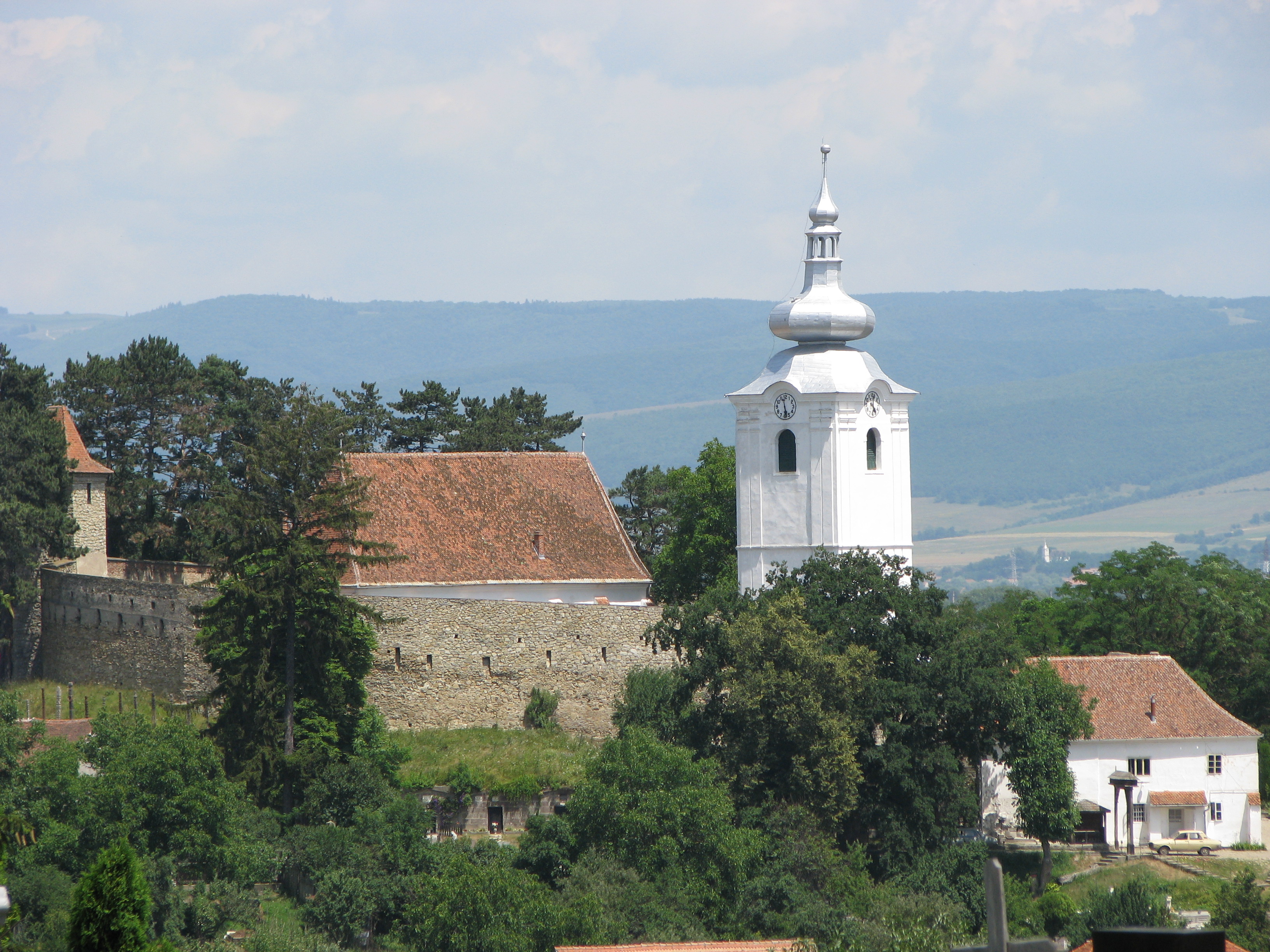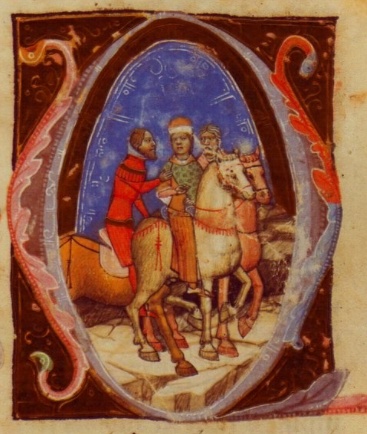|
Brăduț
Brăduț (; ) is a commune in Covasna County, Transylvania, Romania composed of four villages: Brăduț, Doboșeni (''Székelyszáldobos''), Filia (''Erdőfüle''), and Tălișoara (''Olasztelek''). Geography The commune is situated in the northeastern foothills of the Perșani Mountains, at an altitude of , in the valley of the river Cormoș. It is located in the northwestern extremity of Covasna County, just north of the town of Baraolt and from the county seat, Sfântu Gheorghe, on the border with Harghita County. Brăduț may be accessed from the south by Roads in Romania, county road DJ131, followed by communal road DC42. Demographics The commune has an absolute Székelys, Székely Hungarians in Romania, Hungarian majority. According to the 2002 census, it had a population of 4,688, of which 83.64% or 3,921 were Hungarians. At the 2021 Romanian census, 2021 census, Brăduț had a population of 4,923; of those, 65.33% were Hungarians, 24.86% Romani people in Romania, Roma, ... [...More Info...] [...Related Items...] OR: [Wikipedia] [Google] [Baidu] |
Covasna County
Covasna County (, , ) is a county (județ) of Romania, in eastern Transylvania, with the county seat at Sfântu Gheorghe. Demographics In 2011, it had a population of 210,177, making it the second least populous of Romania's 41 counties and the population density was . In 2002 the ethnic composition of the county was as follows: * Hungarians in Romania, Hungarians – 73.58% (or 164,158) * Romanians – 23.28% (or 51,790) * Romani people in Romania, Romani – 2.68% (or 5,973) According to the 2011 Romanian census, 2011 census, the composition of the county was: * Hungarians in Romania, Hungarians – 73.74% (or 150,468) * Romanians – 22.02% (or 45,021) * Romani people in Romania, Romani – 4.05% (or 8,267) * Minorities of Romania, Others – 0.19% According to the 2021 Romanian census, 2021 census, the composition of the county was: * Hungarians in Romania, Hungarians – 71.77% (or 133,444) * Romanians – 22.99% (or 42,752) * Romani people in Romania, Romani – 5.11% ... [...More Info...] [...Related Items...] OR: [Wikipedia] [Google] [Baidu] |
Cormoș
The Cormoș () is a right tributary of the river Olt in Romania Romania is a country located at the crossroads of Central Europe, Central, Eastern Europe, Eastern and Southeast Europe. It borders Ukraine to the north and east, Hungary to the west, Serbia to the southwest, Bulgaria to the south, Moldova to .... It discharges into the Olt in Racoșul de Sus. e-calauza.ro Its length is and its basin size is . Tributaries The following rivers are tributaries to the river Cormoș (from source to mouth): *Left: Chișag, Fierarul, Gherend, Coșag, Șar, Agriș, Hotarul *Right: Bătătura Cailor, Sic, Vârghiș, RicaReferences [...More Info...] [...Related Items...] OR: [Wikipedia] [Google] [Baidu] |
Emília Zathureczky
Emilia Zathureczky ( Olasztelek, 21 October 1823 – Imecsfalva, 5 November 1905) was a Hungarian artifact collector, the founder of the Székely National Museum and helper of revolutionary fighters. Life and work Emilia was born to István Zathureczky Zaturcsai (1795–1875) and Juliánna Tasnádi Nagy (1799–1878) who was a relative of the linguist-historian Gyula Nagy Tasnádi. Emilia was an educated child who learned Latin. From an early age, she enjoyed books, antiques, medals, and Stone Age, Bronze Age and other items she found while collecting. During the 1848–1849 revolution and War of Independence, she gave money and jewelry to equip the national defense, embroidered flag ribbons and made lace. After the War of Independence, she hid fighters and helped them escape. In 1875, she founded the Székely National Museum in Sepsiszentgyörgy with Gyula Nagy Vasady. She created the basic collections and became its single most significant contributor until her final years. ... [...More Info...] [...Related Items...] OR: [Wikipedia] [Google] [Baidu] |
Tatars
Tatars ( )Tatar in the Collins English Dictionary are a group of Turkic peoples across Eastern Europe and Northern Asia who bear the name "Tatar (term), Tatar". Initially, the ethnonym ''Tatar'' possibly referred to the Tatar confederation. That confederation was eventually incorporated into the Mongol Empire when Genghis Khan unified the various steppe tribes. Historically, the term ''Tatars'' (or ''Tartars'') was Endonym and exonym, applied to anyone originating from the vast North Asia, Northern and Central Asian landmass then known as Tartary, a term which was also conflated with the Mongol Empire itself. More recently, however, the term has come to refer more narrowly to related ethnic groups who refer to themselves as ''Tatars'' or who speak languages that are commonly referr ... [...More Info...] [...Related Items...] OR: [Wikipedia] [Google] [Baidu] |
Yellowstone National Park
Yellowstone National Park is a List of national parks of the United States, national park of the United States located in the northwest corner of Wyoming, with small portions extending into Montana and Idaho. It was established by the 42nd United States Congress, 42nd U.S. Congress through the Yellowstone National Park Protection Act and signed into law by President Ulysses S. Grant on March 1, 1872. Yellowstone was the first national park in the US, and is also widely understood to be the first national park in the world. The park is known for List of animals of Yellowstone, its wildlife and Geothermal areas of Yellowstone, its many geothermal features, especially the Old Faithful geyser, one of its most popular. While it represents many types of biomes, the subalpine forest is the most abundant. It is part of the South Central Rockies forests ecoregion. While Native Americans have lived in the Yellowstone region for at least 11,000 years, aside from visits by Mountain ... [...More Info...] [...Related Items...] OR: [Wikipedia] [Google] [Baidu] |
Geyser
A geyser (, ) is a spring with an intermittent water discharge ejected turbulently and accompanied by steam. The formation of geysers is fairly rare and is caused by particular hydrogeological conditions that exist only in a few places on Earth. Generally, geyser field sites are located near active volcanic areas, and the geyser effect is due to the proximity of magma. Surface water works its way down to an average depth of around where it contacts hot rocks. The pressurized water boils, and this causes the geyser effect of hot water and steam spraying out of the geyser's surface vent. A geyser's eruptive activity may change or cease due to ongoing deposition of minerals within their plumbing, exchange of functions with nearby hot springs, earthquake influences, and human intervention. Like many other natural phenomena, geysers are not unique to Earth. Jet-like eruptions, often called cryogeysers, have been observed on several of the moons of the outer Solar System. Due t ... [...More Info...] [...Related Items...] OR: [Wikipedia] [Google] [Baidu] |
Communist Romania
The Socialist Republic of Romania (, RSR) was a Marxism–Leninism, Marxist–Leninist One-party state, one-party socialist state that existed officially in Romania from 1947 to 1989 (see Revolutions of 1989). From 1947 to 1965, the state was known as the Romanian People's Republic (, RPR). The country was an Eastern Bloc state and a member of the Warsaw Pact with a dominant role for the Romanian Communist Party enshrined in :Template:RomanianConstitutions, its constitutions. Geographically, RSR was bordered by the Black Sea to the east, the Soviet Union (via the Ukrainian Soviet Socialist Republic, Ukrainian and Moldavian Soviet Socialist Republic, Moldavian SSRs) to the north and east, Hungarian People's Republic, Hungary and Socialist Federal Republic of Yugoslavia, Yugoslavia (via Socialist Republic of Serbia, SR Serbia) to the west, and People's Republic of Bulgaria, Bulgaria to the south. As World War II ended, Kingdom of Romania, Romania, a former Axis powers, Axis membe ... [...More Info...] [...Related Items...] OR: [Wikipedia] [Google] [Baidu] |
Vârghiș
Vârghiș (, Hungarian pronunciation: ) is a commune in Covasna County, Transylvania, Romania. It is composed of a single village, Vârghiș. History The village formed part of the Székely Land region of the historical Transylvania province. Until 1918, it belonged to the Háromszék County of the Kingdom of Hungary. In the immediate aftermath of World War I, following the declaration of the Union of Transylvania with Romania, the area passed under Romanian administration during the Hungarian–Romanian War of 1918–1919. By the terms of the Treaty of Trianon of 1920, it became part of the Kingdom of Romania. In 1925, the commune fell in Plasa Baraolt of Trei Scaune County. In August 1940, under the auspices of Nazi Germany, which imposed the Second Vienna Award, Hungary retook the territory of Northern Transylvania (which included Vârghiș) from Romania. Towards the end of World War II, however, the commune was taken back from Hungarian and German troops by Romanian and ... [...More Info...] [...Related Items...] OR: [Wikipedia] [Google] [Baidu] |
Reformed Church
Reformed Christianity, also called Calvinism, is a major branch of Protestantism that began during the 16th-century Protestant Reformation. In the modern day, it is largely represented by the Continental Reformed Christian, Presbyterian, Congregational, and Waldensians traditions, as well as parts of the Methodist, Anglican (known as "Episcopal" in some regions) and Baptist traditions. Reformed theology emphasizes the authority of the Bible and the sovereignty of God, as well as covenant theology, a framework for understanding the Bible based on God's covenants with people. Reformed churches emphasize simplicity in worship. Several forms of ecclesiastical polity are exercised by Reformed churches, including presbyterian, congregational, and some episcopal. Articulated by John Calvin, the Reformed faith holds to a spiritual (pneumatic) presence of Christ in the Lord's Supper. Emerging in the 16th century, the Reformed tradition developed over several generations, esp ... [...More Info...] [...Related Items...] OR: [Wikipedia] [Google] [Baidu] |
Charles I Of Hungary
Charles I, also known as Charles Robert (; ; ; 128816 July 1342), was King of Hungary and Croatia in the union with Hungary, Croatia from 1308 to his death. He was a member of the Capetian House of Anjou and the only son of Charles Martel of Anjou, Charles Martel, Prince of Salerno. His father was the eldest son of Charles II of Naples and Mary of Hungary, Queen of Naples, Mary of Hungary. Mary laid claim to Hungary after her brother, Ladislaus IV of Hungary, died in 1290, but the Hungarian prelates and lords elected her cousin, Andrew III of Hungary, Andrew III, king. Instead of abandoning her claim to Hungary, she transferred it to her son, Charles Martel, and after his death in 1295, to her grandson, Charles. On the other hand, her husband, Charles II of Naples, made their third son, Robert the Wise, Robert, heir to the Kingdom of Naples, thus disinheriting Charles. Charles came to the Kingdom of Hungary upon the invitation of an influential Croatian lord, Paul I Šubić of ... [...More Info...] [...Related Items...] OR: [Wikipedia] [Google] [Baidu] |




